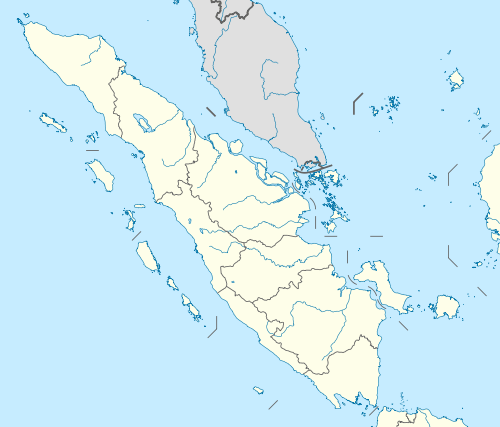Mount Sibayak
Mt. Sibayak (Indonesian: Gunung Sibayak) is a stratovolcano overlooking the town of Berastagi in northern Sumatra, Indonesia. Although its last eruption was more than a century ago, geothermal activity in the form of steam vents and hot springs remains high on and around the volcano. The vents produce crystalline sulfur, which was mined on a small scale in the past. Seepage of sulfurous gases has also caused acidic discolouration of the small crater lake.
| Mount Sibayak | |
|---|---|
| Gunung Sibayak (Indonesian) Deleng Sibayak (Karo) | |
.jpeg) Sibayak seen from the Southeast | |
| Highest point | |
| Elevation | 2,212 m (7,257 ft) |
| Listing | Ribu |
| Coordinates | 3°14′21″N 98°30′20″E |
| Geography | |
| Geology | |
| Mountain type | Stratovolcano |
| Last eruption | 1881 |
Sibayak is a term from the Karo Batak language referring to a founding community. It is relatively easy to climb and has been a tourist attraction since colonial times.
 Crater of Gunung Sibayak. Mount Sinabung in the back.
Crater of Gunung Sibayak. Mount Sinabung in the back. Mount Sibayak in 1920s
Mount Sibayak in 1920s The "Sibajak raja berampat", the so-called four princes with their wives, Karolanden, North Sumatra (1914-1919)
The "Sibajak raja berampat", the so-called four princes with their wives, Karolanden, North Sumatra (1914-1919)
See also
References
This article is issued from Wikipedia. The text is licensed under Creative Commons - Attribution - Sharealike. Additional terms may apply for the media files.
